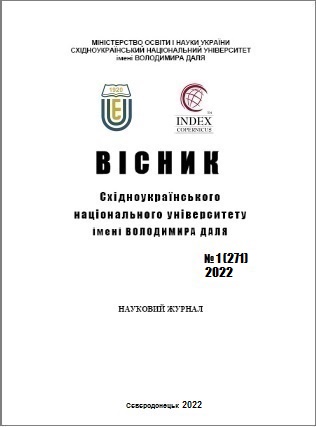Construction of mathematical models of evaporatiоn plant by experimental-statistical method
DOI:
https://doi.org/10.33216/1998-7927-2022-271-1-36-40Keywords:
mathematical model, evaporation plant, ammonium nitrate, adequacy criteriaAbstract
In the process of research, it is necessary to have a mathematical description of the technological processes that take place in individual evaporators to solve the problems of optimal control of the evaporation process in the production of ammonium nitrate. The ultimate goal of the study is to obtain an adequate mathematical model of the evaporation process and find the optimal technological regime.
An evaporator was investigated, which includes an evaporator with a separator for evaporating a fresh solution of ammonium nitrate and a afterevaporator with a falling membrane. Analysis of the evaporator as a control object allowed to determine the input and output parameters that characterize the features of the evaporation process in different evaporators. Based on the analysis, the need to develop models for each evaporator is established.
Statistical material was collected from a real control object to obtain experimental and statistical models of the evaporator. Data processing was performed by methods of correlation and regression analysis.
Based on the obtained experimental data, a multifactor correlation-regression analysis was performed to obtain the best possible dependences for estimating the output values of evaporators. For parameters whose statistical description guarantees a given reliability, one-factor regression analysis was performed.
In addition to linear models, exponential, hyperbolic, and logarithmic models were analyzed.
According to the results of the study, it was found that not all of these input parameters have a strong correlation with the output parameters, considering the chosen level of reliability of the model. Thus, some of the information obtained experimentally was not available for analysis by classical statistical methods.
As a result of comparison of criteria of model’s adequacy at different stages of research, models with high indicators are received. When checking the adequacy of the obtained models for all dependencies, the relative error of the results did not exceed 2%, which confirms the importance of the obtained models and the possibility of their application for forecasting management.
References
1. Кафаров В.В. Методы кибернетики в химии и химической технологии / В.В. Кафаров. – М.: Химия, 1985. – 448 с.
2. Вольберг А.А. Планирование промышленного эксперимента в цехе аммиачной селитры / А.А. Вольберг, С.Г. Широков, Ю.П. Адлер //Химическая промышленность. − 1986. – С. 33−40.
3. Кондратьев В.В. Применение метода активного эксперимента для получения математического описания производства карбамида / В.В. Кондратьев, Р.Я. Шебакпольская //Азотная промышленность, 1983. − №3. – С. 65−72.
4. Поркуян О.В. Экспериментально-статистические модели нейтрализации в производстве аммиачной селитры / О.В. Поркуян, Е.И. Проказа // Науковий збірник «Вісник національного технічного університету України «Київський політехнічний інститут». − 2010. – №2 (6). – С. 99−104.
5. Иванов М.Е. Производство аммиачной селитры в агрегатах большой единичной мощности / М.Е. Иванов, В.М. Олевский, Н.Н. Поляков. − М.: Химия, 1990. – 228 с.
6. Стенцель Й.І. Математичне моделювання технологічних об'єктів керування / Й.І. Стенцель. – К.: ІСДО. 1993. – 328 с.
7. Кильдишов В. Д. Использование приложения MS Excel для моделирования различных задач: Практическое руководство / В.Д. Кильдишов. – М.:СОЛОН-Пр., 2015. – 156 с.

